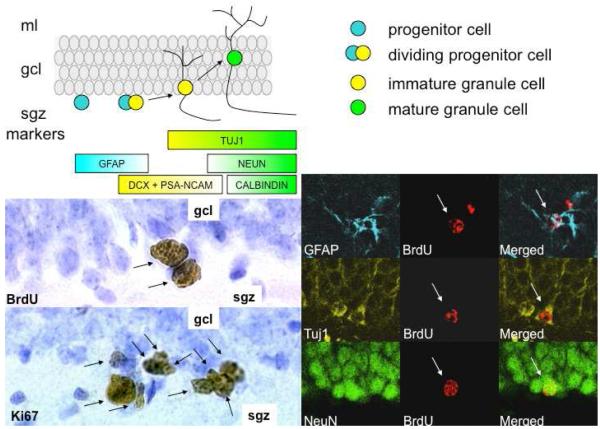Figure 1.
Top left: schematic diagram of adult neurogenesis in the dentate gyrus of the hippocampus. Progenitor cells in the subgranular zone (sgz) divide and produce daughter cells. Most of these cells differentiate into excitatory granule cells and integrate into the granule cell layer as they differentiate. At different timepoints during their maturation, new cells express specific biochemical markers, listed below the schematic diagram. Photomicrographs (bottom left) show BrdU labeled cells (arrows, top), and Ki67 labeled cells (arrows, bottom). BrdU is an exogenously applied marker that labels cells in S phase while Ki67 is an endogenous marker of actively cycling. Confocal microscopic images (bottom right) show cells labeled with BrdU (red) and a marker of astroglia (GFAP), immature and mature neurons (Tuj1) and mature neurons (NeuN).

